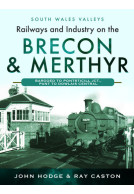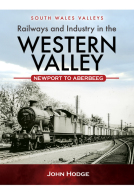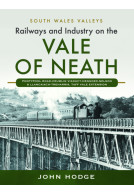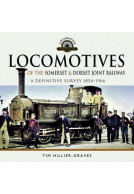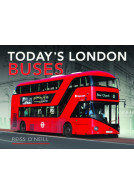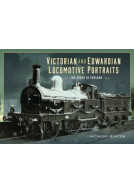Railways and Industry on the Brecon & Merthyr Railway (ePub)
Merthyr-Pontsicill Junction-Brecon
Imprint: Pen & Sword Transport
Series: South Wales Valleys
File Size: 121.7 MB (.epub)
ISBN: 9781399041096
Published: 30th June 2023
| Other formats available - Buy the Hardback and get the eBook for £1.99! | Price |
|---|---|
| Railways and Industry on the Brecon… Hardback Add to Basket | £28.00 |
The third in a trilogy on the Brecon & Merthyr Railway, this book covers the line from Merthyr to Pontsticill where it met the line from Newport and continued to Brecon. Between Pontsticill and Brecon the line ran through beautiful scenery with reservoirs on the west side and the Brecon Beacons on the east with the famous Seven Mile bank to test the ability of fireman not to stall their engine. The book is hugely illustrated as it passes through Pontsticill and on through Dolygaer, Pentir Rhiw, Torpantau and Talybont on Usk, this being one of the most scenic sections of the Western Region. Talyllyn and Brecon itself are also very well illustrated giving an idea also of the variety of services that ran into Brecon, not only from Newport, but from Neath, Hereford and Mid-Wales. Passenger services to Brecon from all these places were withdrawn in December 1962, though freight, mostly domestic coal, services from Merthyr continued until 1964. The area is not without some passenger services however in the present day as the Brecon Mountain Railway has been developed between Pant, Pontsticill and Torpantau. This final volume of three provides views in stark contrast to the industrial section at the south end of the Brecon & Merthyr where it runs through the South Wales Coalfield and the former iron producing areas of Merthyr and Dowlais.
"...the result is a book that be recommended unhesitatingly."
National Railway Museum Review – The Journal of the Friends of the National Railway Museum – No186, Winter 2023/24
“Another comprehensive collection of images and text… There then follows a journey along the lines, each section described with the aid of maps and filled with hundreds of superb photographs covering the time span from early days to final days, all of the best quality and reproduced on quality paper such that I find it difficult to find the words to convey the excellence of the book. The authors have excelled themselves in finding the quantity and quality of the images that I find it difficult to put the books down.”
Great Eastern Railway Society Newsletter
As a photographic compilation this must be the most attractive book in the series about South Wales lines. It was one of the most scenic routes in Britain, let alone Wales, and attracted some highly competent photographers to remote locations.
Welsh Railways Research Circle Newsletter No.175, Autumn 2023
An enjoyable, nostalgic, read.
As featured in
Steam World - October 2023
"An enjoyable nostalgic read."
The Journal of the Friends of the National Railway Museum - Autumn 2023, Issue 185
" I enjoyed this book..."
The Railway Correspondence and Travel Society - The Railway Observer, October 2023, Volume 93, Number 1136
"To sum up, this book is 183 pages of sheer delight, and the three volumes together are unlikely to be rivalled in their comprehensive coverage of this most special of lost Welsh railways."
West Somerset Railway Association
As featured in
Rail
"This handsome book is the third in a trilogy on the Brecon and Merthyr Railway and is a must for all railway enthusiasts."
Glamorgan Star - Thursday 24th August 2023
About Ray Caston
Ray Caston is a former chemist, working for Monsanto’s at Newport. He has lifelong association with the B&M where his father and grandfather were both employed. He has lived all his life at Bassaleg where he is a local councillor. Since 1970 he has maintained a continuous interest in the operation and history of the B&M line, Bassaleg being its southern terminus. He has a wide knowledge of the South Wales railway scene and is a valued member of local railway societies.
About John Hodge
The late John Hodge was a former railwayman, who started his working life on the Western Region in South Wales in 1961, later transferring to London Paddington and British Railways Board. He was brought up in Barry, a port town west of Cardiff, which has strong railway connections, once being an important port for coal traffic and later being famous for Woodham Brothers scrap yard, and which held over 200 locomotives that are now mostly preserved on heritage lines. John was a lifelong railway enthusiast and historian, with many railway histories published.










